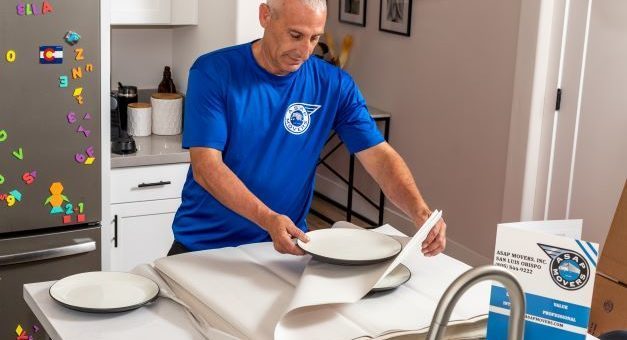1. Start early! Most people underestimate how long it takes to properly pack up their belongings. If you are not fully packed on move day you will have to rush. You could misplace items and it could end of costing you more time! This is also a good time to declutter and get rid of anything you don’t want before packing. If you don’t use it, then don’t pay to move it. Packing can be quite tiring, and most people find it easier to pack in 2–3-hour slots. Start at least 1-2 weeks before your move date with items that you don’t need to use every day. Keep in mind that fragile items like dishes tend to be time consuming.
2. Use quality boxes. It is understandable to want to recycle old boxes, but keep in mind that they are much more likely to crush if they have been used more than once. Uniform boxes are easier to stack safely and less likely to collapse during transport. This is especially important on long distance moves and items going into storage. You can reuse packing paper or use newspaper to save on materials cost. You can also use towels/pillows for padding. They will be taking up space in your boxes anyways, you might as well use them for protection!
3. Be meticulous with your labeling. The more specifically you label boxes, the less likely you will have trouble finding items you need when unpacking. Label each box on the top and side, with the room it came from and contents inside. Color coding by room can be very helpful to you and your movers. If there are items you will need right away (lamps, bed linens, dishes, etc.) label the box “open first”. It is also helpful to pack items from the same area in each box.
4. Use the right size boxes. Heavy items like books should be packed in smaller boxes, while lighter items like linens and towels can be packed in larger boxes. If you can help it, most boxes should be 50 lbs. or less. Make sure to fill the box up to the top, boxes with open air inside will crush more easily. You want the box to be full, but not bulging. For electronics (TV’s, monitors, computers), it’s a good idea to keep the original packaging so you can use them each time you move. Make sure to use adequate tape on the bottom and top of boxes so they don’t split open!
a. Small 1.5 cu.ft. – Books, canned goods, desk/file cabinet contents
b. Medium 3.0 cu.ft. – Lighter articles, pots and pans, coffeemaker, blender
c. Large 4.5 cu.ft. – Comforter, blankets, towels, hats, stuffed animals, lampshades
d. Dish Pack 5.1 cu.ft. – Coffee cups, plates, glassware, and other fragile items
e. Wardrobes – Hanging clothes, taller lamps, curtains (usually room under clothes for more closet items such as shoes, hats, purses)
f. Picture Pack – Pictures, mirrors, glass tops, TVs
g. Custom Box – Can use multiple boxes by telescoping or cutting down for odd-shaped pieces
5. Pack anything that can fit into a box. One of the most common causes for a long move day is insufficient packing. Every trip with an individual, unpacked item takes time and can make for a long day. With that said, you can usually leave clothing and linens in dresser drawers. Also, it’s a good idea to buy more packing supplies than you think you need. Most people underestimate how many boxes they will use.
6. Don’t pack perishables, liquids, combustibles, or flammables. This is especially important on long distance or storage moves. A liquid spill or spoiled food can do a lot of damage to a shipment. On local moves, it’s a good idea to pack these items in a clear plastic container and take them in your personal vehicle. A Ziplock bag can be a good safeguard as well. Check out the full list of non-allowable at www.asapmovers.com under moving resources.
7. Most local moves are billed by time. The more organized and consolidated your items are, the more money you can save by reducing trips back and forth to the truck. If you are packing yourself, stage your packed boxes near the front door or garage to speed things up on move day.

